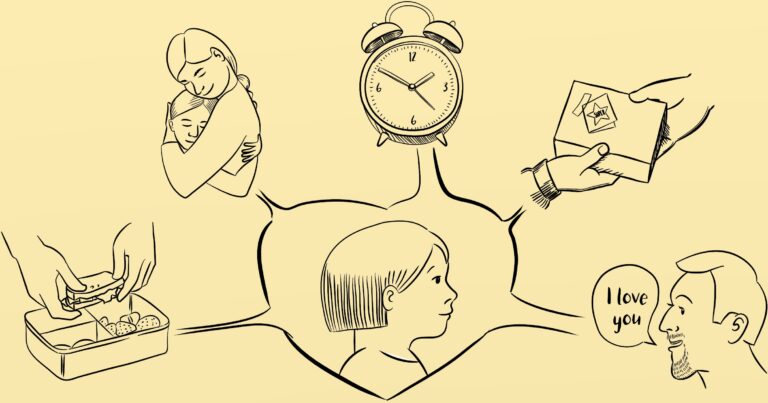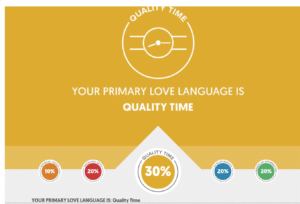
How Going Gluten-Free Transformed our Home
Hi, I’m Melissa, Beth asked me to explain how going gluten-free made a difference in our household. I have a

Do you find it difficult to know how much of your child’s lack of follow-through is because of dyslexia or their other learning challenges, and how much is disobedience?
School may be hard for them; their home should be their refuge. Even though I understand that yelling and nagging are not helpful strategies, I sometimes feel like an old vinyl record (yup, I’m showing my age) stuck on repeat as I bark out instructions to Harry to do his chores.
These chores are not all on the same day. Few teens would do that much, but I expect Harry to help around the house. Now that he is a teen, he’s less compliant, and sometimes my nagging reaches world record levels. I worry it is damaging our parent/child bond, and I want to stay connected with him.
I decided to re-read a parenting book I recommend in Dyslexia Wrestling with an Octopus. This book by Gary Chapman and Ross Campbell is called The 5 Love Languages of Children. It isn’t new— my edition is dated 1997— but it is as relevant today as it was when they wrote it.
Drs Cloud and Townsend coined the idea of an ‘emotional tank.’ They suggest that when you use your child’s love language, you fill their emotional tank, and the child feels more connected to you. In this state, they are easier to discipline and train.
The theory is that each person feels love in different ways. If you try to show love to someone without using their love language, they may not feel loved. If you work out your child’s love language and use it, they will feel loved. But here’s the kicker: when the child enters their next stage of development, their love language may change.
Unconditional love is the foundation of good communication between a parent and a child. On p17 of my edition, the authors state:
The first chapter covers the importance of unconditional love and needs of a young child and an adolescent. The authors say the parent’s behaviour is the key because children are behaviourally motivated – they respond to their parent’s actions more than words.
There’s a great website that goes alongside the book https://www.5lovelanguages.com/5-love-languages/.
It has online quizzes for couples, children, teens and singles to identify their love language preferences.
Quaking, I asked Harry to take the teen quiz. I picked my time carefully, checked he’d eaten and had spent half an hour chilling with YouTube. Then, I read the questions aloud to him. Harry suffers from slow processing speed. Here’s a blog post explaining what this means. Giving him ample of time to process the information helped him answer all the questions.
As mentioned earlier, love languages can change as a person gets older. Ten years ago, when I first read the book, I picked Harry’s love languages to be words of affirmation and physical touch. I was keen to see if they had changed.

Sorry, I know that this image is blurry. Harry’s physical touch score had dropped to 10%, and quality time had moved into the number one spot at 30%. That gives me food for thought. Getting quality time with a teen who wants to be on his mountain bike or out with friends can be challenging.
An interesting observation in the book was that you need to go to your child’s physical/emotional level of development. If your child is crawling, you sit on the floor with them. As they get older, you follow their interests. If they are into sporting events, you go to watch.
Recently, Harry begged me to watch his mountain bike race. I wasn’t keen. Where would I stand on the treacherous course? I knew it would be hard slogging up a steep hill on foot to witness a few seconds of his racing.
I went begrudgingly, but I’m glad I did. At his next race, I’ll try to be more positive.
In the chapter on quality time, I also read that giving your child positive eye contact and doing activities together is essential. With this in mind, I asked Harry to help me cook dinner.
Harry is seriously into music, so as he sat at the bench chopping onions, he put on his favourite tunes. I learned about the intricacies of Spotify, and he showed me how to build playlists. We had a good thirty minutes of quality time. After dinner, when I asked him if I could help him plan his homework, he agreed without the usual struggle, so there might be something in this love language concept.
The 5 Love languages of Children has chapters on each love language and ideas of how to show that language at every age. The authors stress that you should sprinkle other love languages in your interactions. Looking at Harry’s quiz results, I see that acts of service, words of affirmation and receiving gifts are all important to him on 20%. Undoubtedly, he still likes physical touch, but like most teens, he wants that from friends more than from his mother.
After the chapters on love languages, there is a chapter on discipline. The recommendation is not to use a form of punishment directly related to your child’s primary love language, i.e. for a child craving quality time, don’t use time out as a punishment.
On p132 of my edition, the authors stress the need to understand the link between learning and emotional maturity.
Many children with dyslexia are emotionally a few years behind their peers. No doubt, this lack of maturity also hinders their learning. The authors suggest that keeping a child’s love tank full is the best way to help them develop emotional maturity.
I wholeheartedly recommend this book and the website that goes with it. There are podcasts on the site if you prefer to learn in that way.
Re-reading The 5 Love Languages of Children has encouraged me to remember to speak Harry’s love language. We have some challenging teen years ahead, but I also recognise that they will fly by.
Decreasing my nagging will help me enjoy the time we have left to parent Harry. The tips in this book are an excellent place to start.
Find out how to teach spelling and reading in 30 minutes a day here.
Speechify is an app that can help dyslexic children as it reads online text. Here is my affiliate link.

Hi, I’m Beth. Seven years ago, when I discovered my son had dyslexia, I had a ‘light-bulb’ moment and understood this explained many of my own difficulties. Ever since, I’ve been on a mission to discover the best ways to wrestle what I like to call the dyslexia octopus.

Hi, I’m Melissa, Beth asked me to explain how going gluten-free made a difference in our household. I have a

It’s 4 AM and I’m going over what happened to Harry at school yesterday, wondering how best to help. My
2 Responses
WOW! this has really got me thinking. I too feel like a constant nag – and I am sadly. The nagging doesn’t change his behaviour though. I plan to do the online quiz after school and grab a copy of the book from the library. Thanks for reminding me there is always another approach I can try.
Hi Melissa, thanks for your comment. I hope you find the Love Languages book helpful. It was a gamer changer for me.